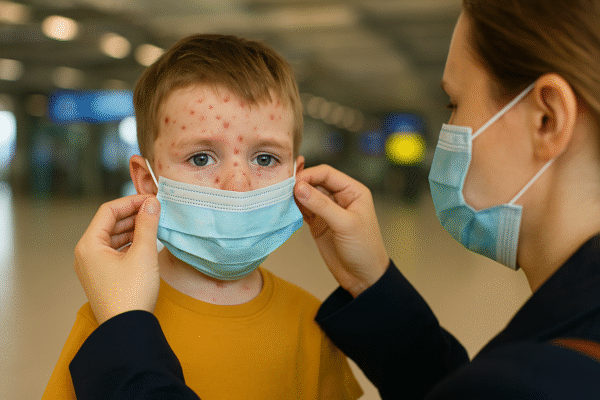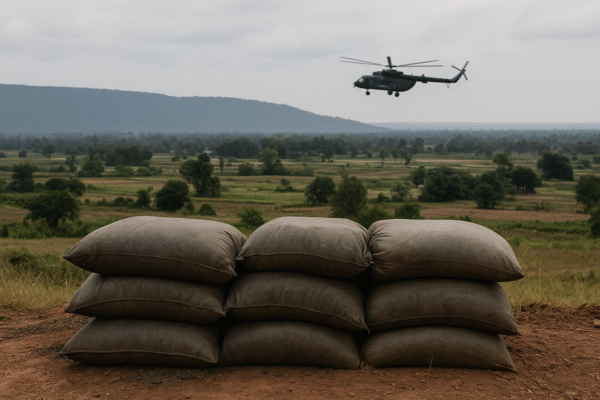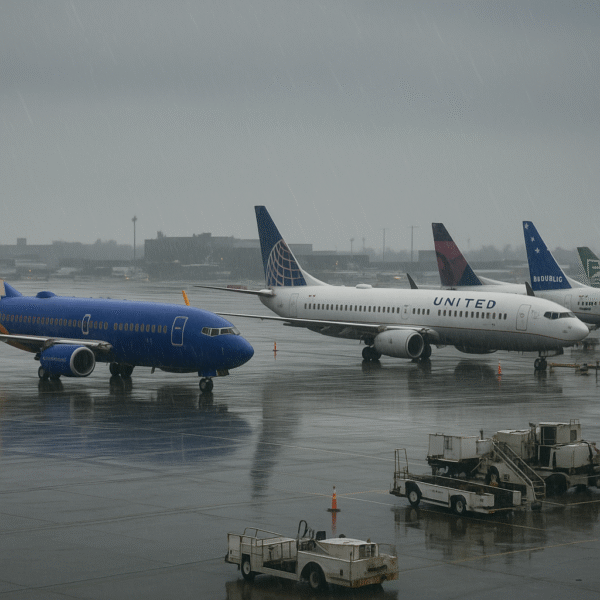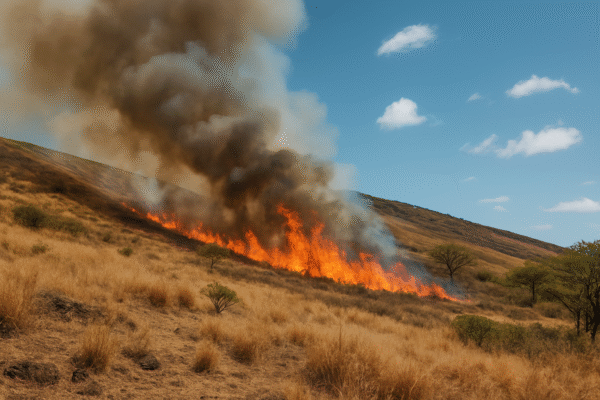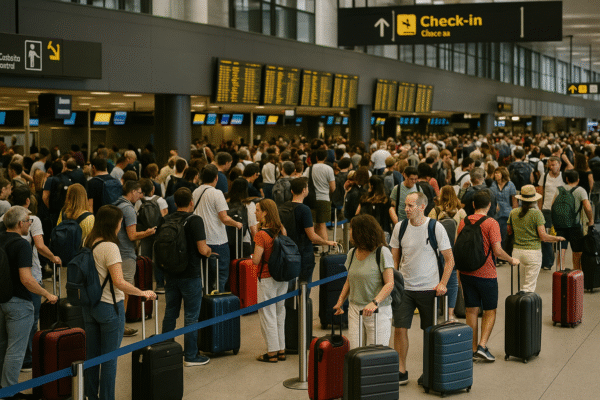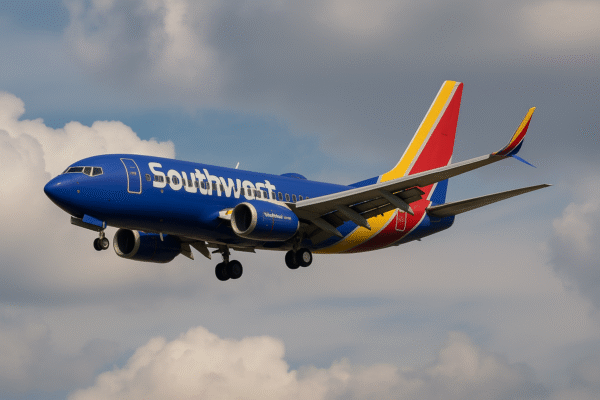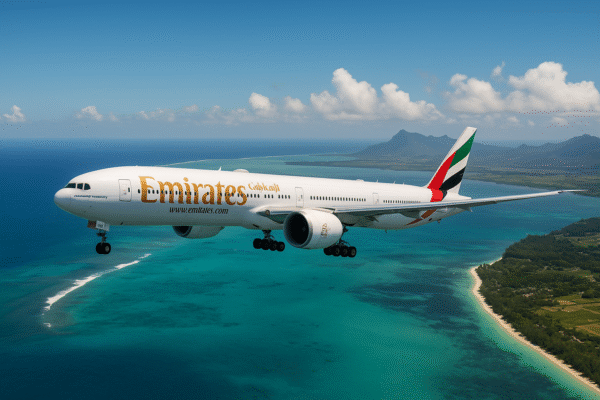A routine domestic flight from Burbank, California, to Las Vegas, Nevada, turned into a high-stakes emergency on July 19 when Southwest Airlines Flight 1496 had to perform a sudden evasive maneuver to avoid a potential midair collision. The incident has prompted urgent discussions among federal regulators, aviation experts, and airline passengers about the safety of increasingly congested American skies.
The Federal Aviation Administration (FAA) confirmed it has launched an active investigation into the near-collision, which occurred at approximately 14,100 feet in a shared flight corridor. The Boeing 737 was forced to descend 625 feet within minutes after its Traffic Collision Avoidance System (TCAS) triggered an emergency alert. The aircraft ultimately landed safely in Las Vegas, but two flight attendants suffered injuries during the turbulence caused by the sudden drop.
FAA Investigates Alarming Midair Proximity
Flight tracking data from Flightradar24 revealed that the two aircraft came within just 4.86 miles horizontally and 350 feet vertically of each other—well within the FAA’s safety minimums. While no passengers were injured, the close call is drawing attention to the rising risks of midair incidents in America’s most trafficked air corridors.
An FAA spokesperson stated that “the proximity of these two aircraft falls below standard safety margins and warrants a full review of air traffic control procedures, pilot responses, and equipment functionality.” Industry sources suggest that the other aircraft involved was a regional jet passing through a busy flight path intersecting the Las Vegas approach route.
A Crowded Sky: Rising Air Traffic in the U.S.
According to FAA air traffic volume data, the U.S. manages over 45,000 flights daily, and the number continues to grow as post-pandemic travel rebounds. Key airspaces—including Southern California and the Las Vegas corridor—are reaching saturation, leading to increasing occurrences of near-miss incidents.
The FAA’s National Airspace System Operations Report shows a rise in TCAS-triggered events in 2024–2025, especially in Class B airspace zones surrounding major cities. As private jets, low-cost carriers, and commercial fleets all vie for limited airspace, maintaining safe vertical and horizontal separations becomes increasingly difficult.
Technology and AI: The Future of Safer Skies
Aviation experts believe that technology holds the key to avoiding future near-miss events. While TCAS remains a cornerstone of modern aviation safety, it is fundamentally reactive—relying on aircraft getting dangerously close before issuing alerts.
Emerging solutions like AI-powered air traffic management systems, already under trial by NASA and the FAA’s NextGen program, aim to revolutionize how airspace is monitored. These systems can analyze vast datasets in real-time, offering predictive warnings to controllers and pilots before conflicts arise.
“Integrating AI with satellite-based ADS-B surveillance and automated flight routing could radically reduce controller workload and prevent human error,” said Dr. Alyssa Chen, an aviation systems engineer at MITRE Corporation, which collaborates with the FAA on safety initiatives.
Call for Enhanced Pilot Training and Coordination
While technology continues to advance, human decision-making remains critical. In the Southwest Airlines incident, the pilot’s rapid descent may have averted a disaster. Aviation analysts say this highlights the need for enhanced simulation training focused on congested-airspace responses and real-time TCAS alerts.
Southwest Airlines issued a statement confirming that the crew followed all procedures and commended their “swift, professional response under challenging conditions.” However, the airline also announced an internal review of the flight data and crew communications.
The Air Line Pilots Association (ALPA) has advocated for increased investment in scenario-based training programs that prepare pilots for real-time decision-making under duress. Additionally, they call for more robust coordination between airline operators, air traffic control centers, and regional carriers sharing the same airspace.
Southwest Incident as a Turning Point
This latest close call has reignited broader questions about airspace infrastructure, safety oversight, and preparedness as domestic air travel grows. In May 2025, a report from the U.S. Government Accountability Office (GAO) warned that outdated radar systems, staffing shortages, and rising flight volume could converge to increase the risk of midair collisions unless urgent modernization occurs.
The incident also adds pressure to the FAA’s Air Traffic Organization (ATO) to accelerate rollout of upgraded automation tools and cloud-based data-sharing networks.
Passengers React with Renewed Caution
Travelers on Flight 1496 described the descent as a jarring drop that left drinks flying and seatbelts tightening. Some passengers have since posted about the event on social media, expressing gratitude for the safe landing but also concern about the risks of air travel.
“I fly this route every month for business. I’ve never felt something like that—it was fast and scary,” one frequent flyer posted on X (formerly Twitter). Another wrote, “We trust the system, but clearly, the system needs upgrades.”
What This Means for the Future of U.S. Air Travel
While the FAA investigation continues, aviation leaders say this incident must serve as a wake-up call. With more flights in the sky than ever before, U.S. aviation safety depends on swift investment in both next-generation technologies and human readiness.
Passengers boarding their next flight may not notice the sophisticated systems working behind the scenes to keep them safe—but those systems must evolve to keep up with demand. For Southwest Airlines and the broader aviation ecosystem, this incident may prove to be more than just a close call—it could be a catalyst for long-overdue reform.
For more travel news like this, keep reading Global Travel Wire




